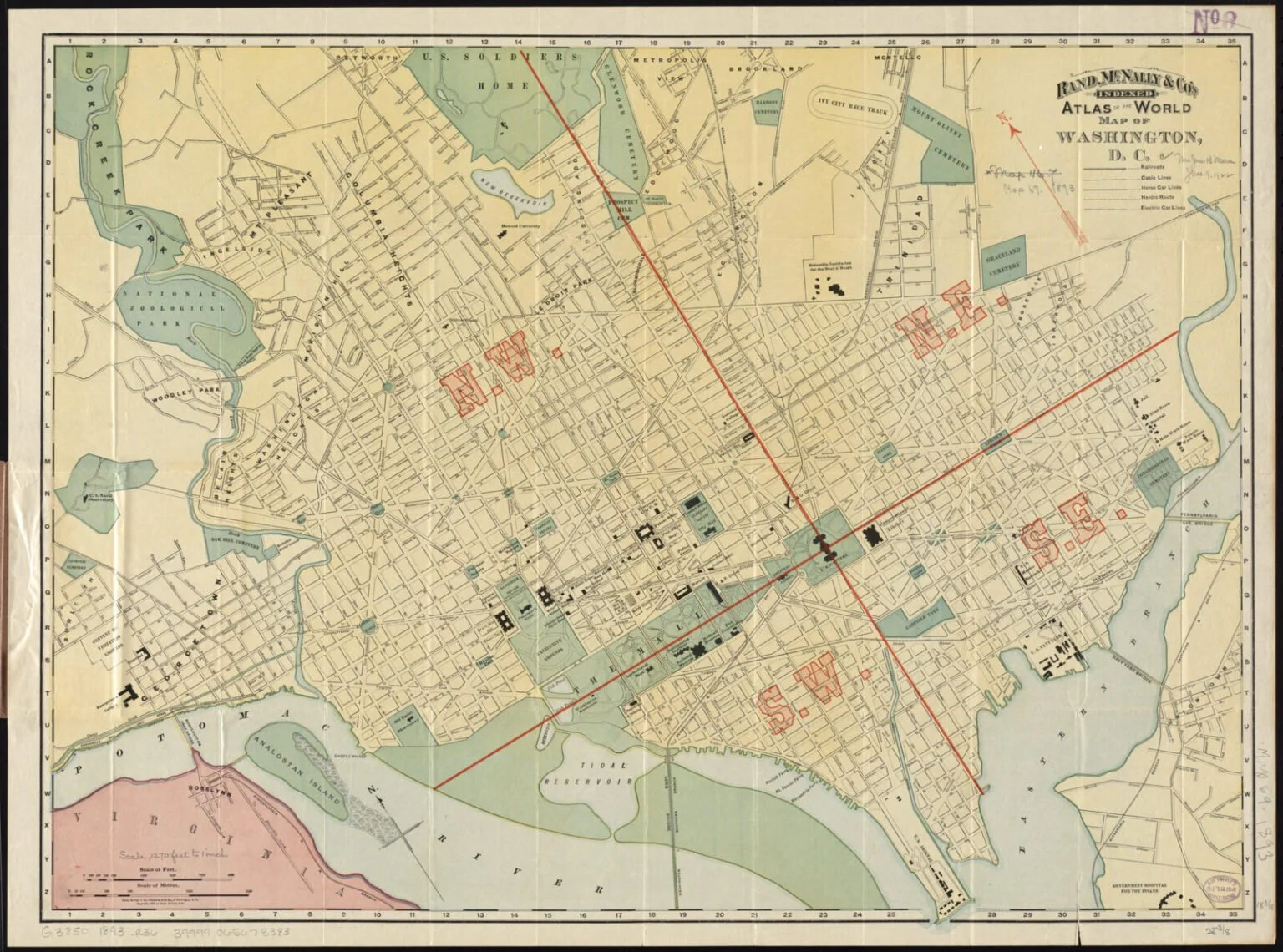The DC Council just gave initial approval of the new district boundaries for the city’s 8 wards. With most boundaries remaining as is, there’s been plenty of controversy over the growth of Wards 7 and 8, and the future development at the Armed Forces Retirement Home campus.
The D.C. Council on Tuesday gave initial approval to a new map of ward boundaries, extending Ward 8 across the Anacostia River for the first time and moving Ward 7 further west into Capitol Hill. But the debate of the day actually centered on two largely unpopulated parcels in Ward 5, which will now be transferred to Ward 1.
The vote was the culmination of a four-month redistricting process that followed the decennial census completed last year, and had the goal of balancing the city’s population across its eight wards after a decade’s worth of rapid — though uneven — growth. (A second and final vote is set for Dec. 21.)
With a population of 689,545 in 2020, the average population for every ward should be 86,193, though D.C. law allows a 5% deviation above or below that. The majority of the changes center on fast-growing Ward 6, which had to lose almost 20,000 residents, and wards 7 and 8, the majority-Black areas east of the Anacostia River that both had to grow.
Ward 8 will accomplish that by absorbing a portion of Navy Yard, including Nationals Park and a large number of residential buildings. Councilmember Elissa Silverman (I-At Large), who chaired the three-person Subcommittee on Redistricting, said Navy Yard was chosen to balance the need to grow Ward 8 while not diluting its majority Black voting base. With Navy Yard, Ward 8’s white population will double — but will still only comprise 9% of the ward’s total population.
Ward 7’s western boundary will move from 19th Street to 15th Street, and from Potomac Avenue SE to Benning Road NE, giving it a portion of the Hill East neighborhood on the east end of Capitol Hill. Those changes prompted the most debate leading into Tuesday’s vote, with some Ward 6 residents arguing that they would be cut off from the rest of Capitol Hill, while some residents and leaders in Ward 7 said any equitable growth should push further west and fully incorporate Kingman Park and Rosedale, two adjacent neighborhoods that were split during the last redistricting process a decade ago. An initial proposal from a three-person redistricting subcommittee placed them both in Ward 6, but Chairman Phil Mendelson moved them into Ward 7 as part of his plan to create the new boundary along the length of 15th Street.
Most of the other changes made across the city were minor: a portion of Shaw in Ward 6 was transferred to Ward 2, while other portions to the south in Ward 2 were moved to Ward 6 to keep the populations between both relatively even. No changes were made to the boundaries of wards 3 and 4, while two parcels were transferred from Ward 5 to Ward 1: the Armed Forces Retirement Home and Washington Hospital Center.
Despite neither of those parcels containing many full-time residents, the proposed move sparked the most debate of the day on Tuesday, with Councilmember Kenyan McDuffie (D-Ward 5) mounting a fight to keep them in his ward. He said the law requires changes to ward boundaries only when moving people around is necessary, which was not the case in either Ward 1 or Ward 5.
“I understand some changes must be made, but those changes must be made on what the law requires. It’s not an opportunity to cherry-pick constituencies,” he said. “What happened here was a solution in search of a problem.”
Councilmember Brianne Nadeau (D-Ward 1) disagreed, saying that future development at the Armed Forces Retirement Home campus — which straddles wards 1, 4, and 5 — would most directly affect her constituents in Park View, just to the west along Irving Street.
“Future development uses [of AFRH]… impacts Ward 1 residents the most. As these residents are those who will be most impacted, it makes sense to empower these voices,” she said.
McDuffie proposed an amendment to keep both parcels in Ward 5, but it narrowly failed on a 6-6 vote. (Ward 7 Councilmember Vincent Gray, who suffered a minor stroke over the weekend, was absent.)
While past redistricting processes have sparked similar debates over boundaries, neighborhood identity, and race, this year’s redrawing of the ward maps was more muted — and was conducted more openly, with almost a dozen public hearings and some 200 maps proposed by residents. Most lawmakers hailed the overall result, though some said they only hesitantly bid farewell to residents they will no longer represent as of next year.
“With a requirement that Ward 6 must lose nearly 20,000 residents, there is simply no map you can put in front of me I’m going to like. None. This shift of constituents from a single ward is the largest shift in ward population in D.C.’s history. I am feeling that,” said Councilmember Charles Allen (D-Ward 6). “As we go through these changes, I feel confident that I can count on my colleagues in wards 2, 7, and 8 to work collaboratively to build bridges and get up to speed on neighborhood issues.”
Despite the changes to ward boundaries, residential parking privileges — often a contentious issue, especially if changes are proposed — will remain unchanged moving forward. Additionally, the redistricting does not impact police districts or school boundaries. Lawmakers also stressed that for as dramatic as the changes can seem, they ultimately don’t change most things about daily life in D.C.
“With residential parking zones preserved… the way most people live their lives will stay the same. Your house is just as close to or far from neighbors or stores,” said Allen.
“Lines drawn on a map are not what define a community,” offered Nadeau.



